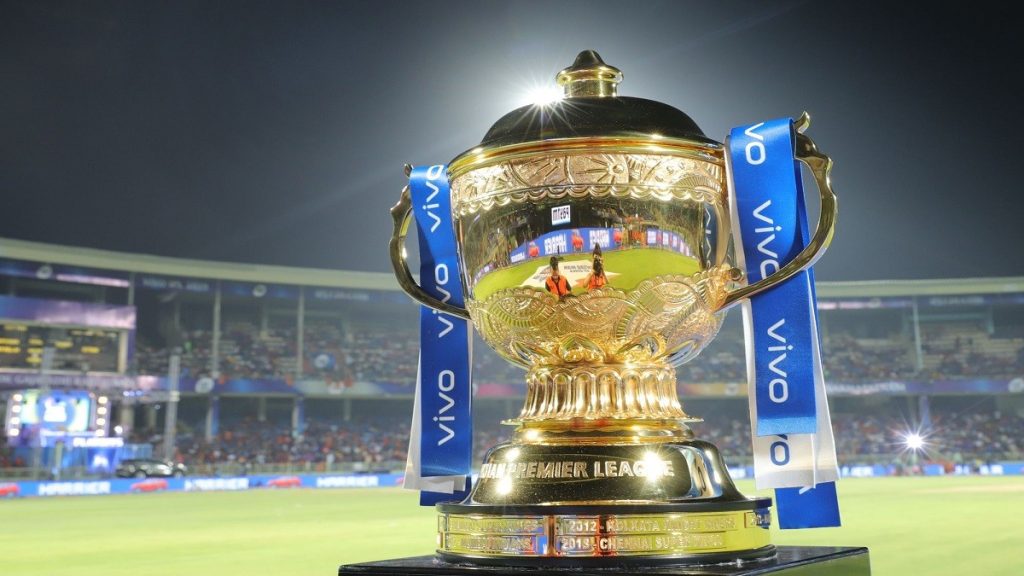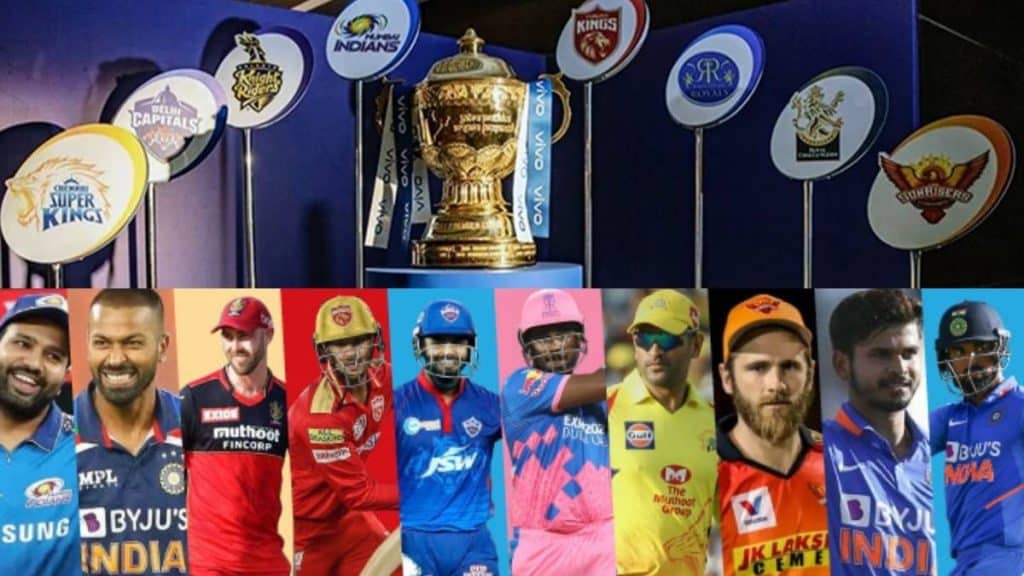IPL and it’s Champions:

The IPL 2022 is round the corner. So, from a fan’s point of view, I wanted to look into the things that all the previous IPL champions and what the most successful teams of the league have done right. This might give us an idea as to what are the things that have to be done right in order to win the IPL Championship, one of the most prized awards in the world of cricket today. We will try and see if there is some definite pattern in the way the IPL champions have approached their batting strategy.
Cricket Analysis of IPL Champions :
The following analysis would be on a team-wise basis and to get deeper into the patterns we will look at the way the teams have fared in the different Phases of the match across the seasons.
Phases in a cricket match :
Powerplay: This phase refers to the first six overs of a 20 over match. In this phase ,only 30 fielders are allowed outside the marked 30-yard circle also known as the inner ring of the cricket field.
Middle Overs: This phase begins from the seventh over of a 20 over match. During this phase ,4 fielders are compulsory within the inner ring while 5 are allowed outside the circle of 30-yards.
Death Overs: This phase is generally considered to be the last five overs of the 20 over match beginning from the 16th over an innings. During this phase the fielding norms of the Middle Overs are applicable.
Parameters Considered:
So, the topic we are looking into will require some standard parameters to be considered and then looking at the pattern of batting of the champions across seasons. We will take into consideration the following parameters:
RPO: RPO stands for Runs Per Over, basically pointing to how many runs are scored by the teams every over on an average.
RPO = (Runs Scored / Overs played)
RPW: RPW stands for Runs Per Wicket, it would show us how efficient were the teams in building up partnerships.
RPW = (Runs Scored / Wickets Lost)
Strike Rotation Percentage: This parameter shows us how much of the total runs are scored from singles, twos and threes out of the total runs. This would give us an idea of how active the scoreboard was kept by the teams.
Strike Rotation % = ( Total Runs Scored in Singles, Twos and Threes / Total Runs) * 100
Boundary Percentage: By this parameter, we would get an idea of how dependent were the teams on boundary hitting for their runs as it shows the percentage of total runs scored in boundaries.
Boundary % = (Runs Scored in Boundaries / Total Runs) * 100
SRF: SRF stands for Strike Rate Frequency, it shows us how frequently strike was rotated by the teams. This would probably help us get a complete idea of how active was scoreboard kept by the teams.
SRF = (Total Deliveries Faced / Total Runs Scored in Singles, Twos and Threes)
BPB: BPB or Balls Per Boundary shows us how many deliveries are taken by teams to score a boundary.
BPB = (Total Deliveries Faced / Total Boundaries Scored)
Overall Comparison:
Let us take a look at the pattern of the performance by the champion teams in general according to the phases of play across the seasons.
Powerplay (PP) :
RPO: First let us look at the Runs Per Over scored by the champion teams.

RPO (PP) Graph Observation:
From the above RPO graph we see that in the Powerplays most of the time the champion teams have maintained a Run Rate of above 7 runs per over. The only exception to the fact has been Chennai Super Kings in 2011(6.17 RPO), Mumbai Indians in 2013(6.53), Kolkata Knight Riders in 2014 (6.93) and Mumbai Indians in 2015 (6.89). The highest Run Rate was maintained by Mumbai Indians in 2017 when they scored at a rate of 8.03 Runs Per Over.
General Trend: If the exceptions are left aside, we see a general trend of runs being scored at a rate of around 7.5 Runs Per Over in the Powerplays by the Champions across all seasons.
Runs Per Wicket: This would show us whether the successful teams valued their wicket too much or they were okay with losing some wickets at the cost of runs.

RPW (PP) Graph Observation:
The graph shows us that most of the teams have scored more than 33 runs per wicket at the beginning of their innings. The exception to this has been CSK in 2010 (32 RPW), CSK in 2011 (29 RPW), MI in 2015 (29 RPW) and MI in 2017 (32 RPW). The team which made their wickets most expensive were Sunrisers Hyderabad in 2016 scoring about 47 Runs Per Wicket.
General Trend: While most champion teams have scored above 33 runs before losing a wicket in general, the pattern seems to be that the successful teams have scored generally above 35 Runs Per Wicket in the Powerplays.
Strike Rotation Percentage: Let’s have a look at the pattern of how much the teams have stressed on rotating strikes thus what percentage of the runs have come from running between the wickets for the teams in Powerplays.

Strike Rotation % (PP) Graph Observation:
From this graph, we see that the minimal value has been set at 27% of the total runs scored in Powerplays coming from running between the wickets. Exceptions to this or teams scoring below this minimal set value were Rajasthan Royals in 2008, Deccan Chargers in 2009 and CSK in 2018. Most importance was given to strike rotation by CSK in 2011 when they scored about 36 % of their runs from singles, twos or threes in the Powerplays.
General Trend: Though the minimal value has been set at 27% but the general trend seems to be around 30-32 % of the runs in Powerplays coming from rotating the strike.
Boundary Percentage: This would help us to look into the fact that how many runs were scored by the teams in boundaries out of their total runs or how good were the teams in utilizing the fielding restrictions of the first six overs.

Boundary % (PP) Graph Observation:
The basic observation from this graph points to the fact that the champion teams have scored above 60% of their runs in boundaries in the Powerplays, which is quite natural due to the presence of only two fielders outside the 30-yard circle. Although it is seen that CSK in 2011(55%), KKR in 2014 (57%) and SRH in 2016 (59%) have scored lower than 60% of their runs in boundaries in the Powerplays. The most hitting prowess in the Powerplays was demonstrated by Deccan Chargers in the second edition of IPL in 2009, where they scored about 71% of their runs in boundaries.
General Trend: The general trend here seems that 62-64% of the runs in the Powerplays comes from boundaries from the successful teams.
SRF: This will show us how frequently was strike rotated by the champion teams in the Powerplays by the teams.

SRF (PP) Graph Observation:
The thing to observe here is the teams with lower Strike Rate Frequency, as that will show fewer deliveries being wasted as dots and strike was rotated more frequently keeping the scoreboard active. What we see here is that the teams have maintained a strike rate frequency of below 3.5, i.e., the teams have rotated strikes twice at least in 7 balls in general. However, we see that RR in 2008 (3.63), Deccan Chargers in 2009 (4.05) and MI just fractionally above (3.56) in 2015 have kept scoreboards less active with short runs. The team with the best strike rotation efficiency have been SRH in 2016 (2.75) rotating strike about 4 times per 11 deliveries.
General Trend: The general trend has been rotating strike every 3 deliveries, i.e., rotating strike twice every over at the least.
BPB: This would point out how many deliveries the teams have taken in the Powerplays to score a boundary.

BPB (PP) Graph Observation:
Here we have set the minimum value to be 6, meaning a boundary at least every over in the Powerplays. We will also look at the minimum values here referring to the fact that the teams who have used the least number of deliveries to score a boundary, pointing to the efficiency at which they score boundaries. CSK in 2011, MI in 2013 and KKR in 2014 have used more than 6 deliveries to score a boundary once in the respective seasons. Deccan Chargers have been the best in 2009 in boundary scoring efficiency in Powerplays.
General Trend: Leaving aside the exceptions we see that in general, the Champion teams have scored a boundary every 5 deliveries.
Middle Overs (MO) :
RPO: Let’s look at the Runs Scored Per Over by the Champion teams in the Middle Overs.

RPO (MO) Graph Observation:
The champions across the season have generally scored more than 7.2 Runs Per Over in the Middle Overs. Only Deccan Chargers in 2009 (7.01 RPO) and KKR in (7.03 RPO) have scored at a rate less than the minimum value set here. The best team in case of scoring runs at a good rate have been RR in 2008 scoring at over 8 Runs per Over in the middle phase from 7-15 overs.
General Trend: The trend here has been scoring runs at a rate of 7.5-7.8 runs in the middle overs by the teams winning the trophies.
RPW: The parameter of Runs Per Wicket here will show us how cautious or reckless the teams have been in the Middle Overs.

RPW (MO) Graph Observation:
We see from the graph that the teams have scored at least more than 28 runs before losing a wicket in the Middle Overs. Deccan Chargers In 2009 (26 RPW), MI in 2017 (25 RPW) and MI in 2019 (27 RPW) have scored less than 28 runs before losing a wicket. In this respect, CSK in 2011 have been quite outstanding and above everybody by quite a margin scoring 55 runs at the cost of one wicket.
General Trend: The general trend shows us that the champion teams have generally tended to score about 29-30 runs at the cost of one wicket in the Middle Overs.
Strike Rotation Percentage: Strike Rotation in the Middle Overs is probably the most important aspect of batting to set up a good finishing platform of an innings be it in the 1st innings or 2nd innings.

Strike Rotation % (MO) Graph Observation:
So, the graph shows us the very evident thing that the percentage of runs scored by rotating strike in the Middle Overs is much higher than in the Powerplays. From the graph, it is clear that most of the successful teams have been able to score more than 42% of their runs by rotating their strike in the Middle Overs. RR in 2008 (37%), MI in 2015(41%) and CSK in 2018 (41%) have scored lesser runs by rotating strikes than the minimum value set here. KKR in 2012 has been the most efficient in case of scoring runs through strike rotation, scoring about 52% of their runs by running between the wickets in the Middle Overs.
General Trend: The teams have generally scored around 44% of their runs by running between the wickets in the Middle Overs.
Boundary Percentage: The Middle phase of a T20 game sees 5 fielders outside the 30-yard circle in general. So, the runs coming in boundaries is bound to decrease in this phase.

Boundary % (MO) Graph Observation:
Most of the champion teams have scored more than 48% of their runs in boundaries. Deccan Chargers in 2009 (44%) and KKR in 2012 (43%) have scored less than the 48% of their runs in boundaries, while the highest percentage of runs in boundaries have been scored by RR in 2008 (nearly 56%) in the Middle Overs.
General Trend: What we see here is that most of the teams in this study have scored about 50-52% of their runs in boundaries in the Middle Overs.
SRF: Let’s find out how frequently and efficiently strike has been rotated by the winners in the Middle Overs.

Observation: At the least the teams have taken 2.1 deliveries, in general, to rotate the strike once in the Middle Overs, i.e., to say the strike has been rotated at the least 10 times in 21 deliveries. Only RR in 2008 (2.17) have a slightly higher value meaning they have taken a few deliveries more to rotate the strike, while the most efficient with rotation of strike has been CSK in 2011 with a value of 1.8 referring to the fact that they have rotated strike about 10 times in 18 deliveries in the Middle Overs.
General Trend: The general trend among the teams is to rotate the strike every 2 deliveries, i.e., thrice every over.
BPB: How frequently have boundaries been scored by the champions in IPL in the Middle Overs? Let us find out.

BPB (MO) Graph Observation:
Boundaries have come at an interval of at least 8 deliveries by teams that have excelled in their respective seasons. Deccan Chargers in 2009 and KKR in 2012 have only played about 9 Deliveries to score a boundary at the least, while the most efficient team in crossing the ropes in the Middle Overs has been RR in 2008, scoring a boundary every 5 balls.
General Trend: Teams have generally taken 7 deliveries to score a boundary in the Middle Overs.
Death Overs (DO):
RPO: With the power hitters being unleashed in the final overs the Runs Per Over is bound to increase a lot. Let’s have a look at how many runs the champions have been scoring towards the end of the teams’ innings.

RPO (DO) Graph Observation:
At least 9 Runs Per Over in the final overs have been considered a standard here. We see that only Deccan Chargers in 2009 (8.4 RPO) and KKR in 2012 (8.5 RPO) have scored at a rate of less than 9 Runs Per Over in the Death. While MI has been the best with a staggering Run Rate of about 12 Runs Per Over in the IPL edition of 2020.
General Trend: While teams have scored at about 9.5 Runs Per Over in general the trend seems to go higher in the last 4 seasons where consistently over 10 runs have been scored by the champions towards the end of an innings.
RPW: While teams tend to emphasize more on scoring at a higher rate in this phase the cost of wicket will take a dip and expectedly runs per wicket will be lesser in this phase.

RPW (DO) Graph Observation:
Scoring at least 18 runs per wicket has been considered minimum here. Deccan Chargers in 2009 (14 RPW) and KKR in 2012 (16 RPW) have scored fewer runs than the minimum considered value. Chennai Super Kings have put the highest price tags on their wicket scoring about 44 runs at the cost of one wicket in 2018 in the Death Overs.
General Trend: The general trend has been a score of about 20 runs before losing a wicket in the death overs. Although in the last 2 years we see an average of 30 runs at least being scored before a wicket is lost, which is a shift of about 10 runs more than the general trend.
Strike Rotation Percentage: Amidst all the power-hitting in the end let’s find out how much importance has been given to the rotation of strike in this phase.

Strike Rotation % (DO) Graph Observation:
Scoring about 32% runs by rotating strikes in the final overs have been considered the minimum. We see quite a few exceptions to the value though, such as MI in 2013(30%), 2015 (27%), 2019 (29%), 2020(25) and CSK in 2021 (28%), while the highest percentage of runs by rotating strike have been scored by Deccan Chargers in 2009 (49%) in the final overs.
General Trend: Teams have in general scored 35% of their runs by running between the wickets, but in the last three years where Runs Per Over in this phase has increased the rotation of strike has decreased leading to the fact the teams are concentrating even more on power hitting towards the end of an innings.
Boundary Percentage: This might be the most important factor along with boundary hitting frequency for the batting teams. This is the parameter that might be generally taking a rise as the years go by in the game.

Boundary % (DO) Graph Observation:
It has been considered here that at least 55% of the total runs scored in death will come from the boundaries. Exceptions to this value have been Deccan Chargers in 2009 (44%) and KKR in 2012 (49%). While the highest percentage of runs have been scored in boundaries by MI in 2020 (71%).
General Trend: While at the beginning of the IPL about 57-60% of runs coming in boundaries in the Death Overs was the general trend, in the recent seasons scoring more than 65% of runs in boundaries seems to be in vogue.
SRF: General emphasis on trying to cross the ropes doesn’t mean that the rotation of strikes in these end overs can be overlooked. Let’s delve further into the aspect.

SRF (DO) Graph Observation:
Taking about 2.2 deliveries to rotate the strike, i.e., rotating the strike 10 times out of 22 deliveries have been considered the minimum regarding the values calculated in this parameter in this phase. MI in 2013 (10 times in about 23 deliveries), 2015 (10 times in about 23 deliveries),2019 (10 times in 24 deliveries), 2020 (10 times in 23 deliveries) and CSK in 2021 (10 times in 23 deliveries) have deflected from the value. While Deccan Chargers in 2009 have rotated the strike 10 times in 18 deliveries and have been the best in this aspect.
General Trend: The teams have tried to rotate the strike in general in every 2 deliveries, i.e., three times each over. But in the last 4 years, we see that less importance on strike rotation in the death overs has been paid and the value has risen to strike being rotated about every 2.3 deliveries, i.e., 10 times in 23 deliveries or nearly four overs, which is a shift from the general value of 12 times every four overs.
BPB: Balls Per Boundary or how efficiently you are able to find the ropes in the end overs determines how strongly you finish an innings.

BPB (DO) Graph Observation:
A boundary at least every 5.5 deliveries. That is two boundaries in every eleven balls is considered nominal here. Deccan Chargers in 2009, CSK in 2010 and KKR in 2012 have been less efficient in scoring boundaries in the death than the nominal value considered here. MI in 2020 has been the best in death overs scoring a boundary every third ball.
General Trend: While the general trend has been to score a boundary every 5th ball the trend has changed in the last 4 years. In recent years a boundary every 4th ball seems normal in the death.
Final Conclusion – Trend of IPL Champions :
Powerplay-
Score: 47
Wickets Lost: 1
Runs Scored in Singles, Twos or Threes: 13
Runs Scored in Boundaries (4+6): 29
Middle Overs-
Score: 78
Wickets Lost: 4
Runs Scored in Singles, Twos or Threes: 34
Runs Scored in Boundaries (4+6): 40
Death Overs-
Score: 55
Wickets Lost: 2
Runs Scored in Singles, Twos or Threes: 15
Runs Scored in Boundaries (4+6): 36
Final Score
Total Runs: 180 Wickets Lost: 7 Runs Scored in Singles, Twos or Threes: 60
Runs Scored in Boundaries (4+6): 107
Comment – Evolution of the IPL :
This final score has been calculated keeping in mind the general trend set by the champions throughout the history of IPL and also the trend that seems to change in the last 3 or 4 years.
So, the basic template maintained here by the champions is to try and score at a brisk rate while keeping wickets in hand at the beginning. Then in the middle phase try and find the boundaries while keeping the scoreboard active by rotating the strike and then with wickets in hand launch onto the opposition bowlers in the death overs.
Although there has been a change in approaching the innings in recent years with players putting less value to their wickets in the middle overs and beginning to attack early and then going berserk in the final overs.
With all said and done if a team can maintain the above template and keep on scoring 180 or more runs in most of the matches in either of the innings, the team would be most successful keeping in mind most of the Indian pitches where the IPL is played in general.
This study just looks at a general trend of how the IPL Champions have performed in IPL over the years. However, the secret to cracking a tournament like IPL requires much deeper studies and I hope to continue doing it in the articles coming ahead within the limitations and scopes that I have.
Cricket Analytics :
Throughout this article, you have seen a breakdown of what stands out from IPL champions throughout the years. A major reason such a breakdown is possible is because of cricket analytics. Cricket analytics refers to the breakdown of data collected over a period of time into a usable form for the average person. It is a cricket analyst that breaks down this data. In order to know more about cricket analytics visit the link below.
Data Source: Mad About Sports Website
Courtesy: David Gladson Sir
Author : Probuddha Bhattacharjee



